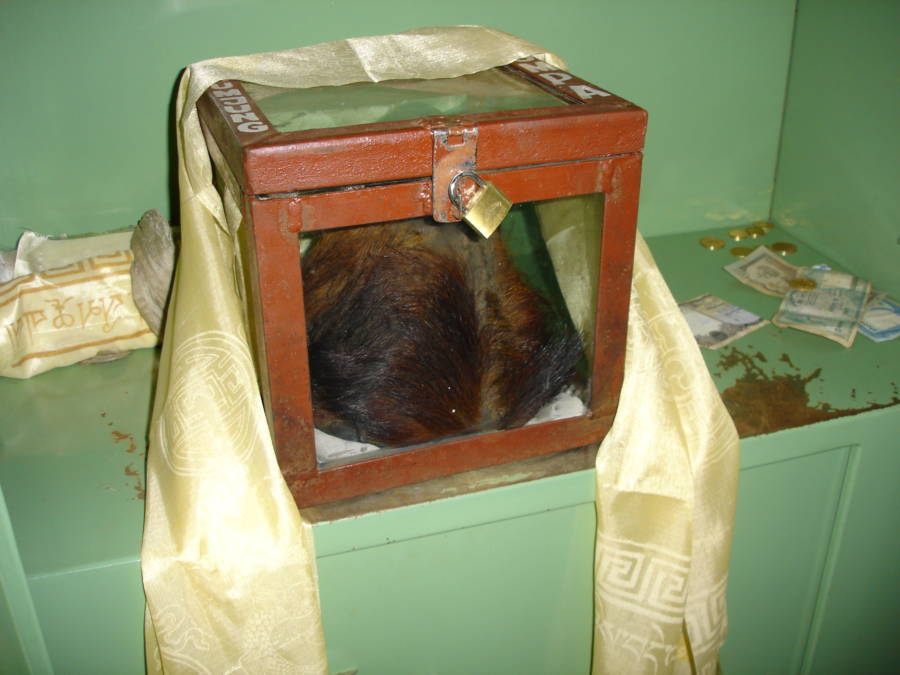The Khumjung Scalp And Edmund Hillary’s Hunt For The Yeti

Nuno Nogueira/Wikimedia CommonsThe “Yeti scalp” in Nepal’s Khumjung monastery was introduced to the Western world by famed explorer Sir Edmund Hillary.
In 1953, building upon Shipton’s reconnaissance mission, Edmund Hillary of New Zealand and Nepalese-Indian Sherpa Tenzing Norgay completed what is perhaps history’s greatest feat of exploration when they became the first people to successfully summit Mount Everest.
But while Hillary’s mountaineering is known the world over, few realize that he was also one of history’s foremost Yeti hunters.
During the course of Hillary’s historic ascent, he claimed to have spotted mysterious footprints in the snow, which Norgay believed came from a Yeti. However, unlike Shipton, Hillary didn’t photograph them, leaving that alleged Yeti evidence (along with the black Abominable Snowman hair he’d supposedly found in the Himalayas the year before) lost to history.
Still, Hillary’s fascination with finding the Yeti had not been snuffed out.
In 1960, Hillary launched a full-fledged Yeti hunting expedition into the mountains of Nepal. While there, Hillary and his team visited a temple in the village of Khumjung. There, they acquired a purported Yeti scalp that had been in the village’s possession for over 200 years.
Upon Hillary’s return to London, the world was abuzz at this incredible Yeti sighting — only to be let down after scientists quickly found that the “scalp” was actually the hide of a serow, a goat-like creature native to Asia. The object has since been returned to Khumjung, where it remains to this day.
As for Hillary, he ultimately concluded that many alleged sightings of the Yeti had rational explanations rooted in local fauna and environmental factors. He told Stars and Stripes newspaper in December 1960, “The Yeti is not a strange, superhuman creature as has been imagined. We have found rational explanations for most Yeti phenomena.”
Although Hillary’s faith in the Yeti may have wavered, other alleged Yeti sightings only reinforced the world’s belief in the cryptid.





